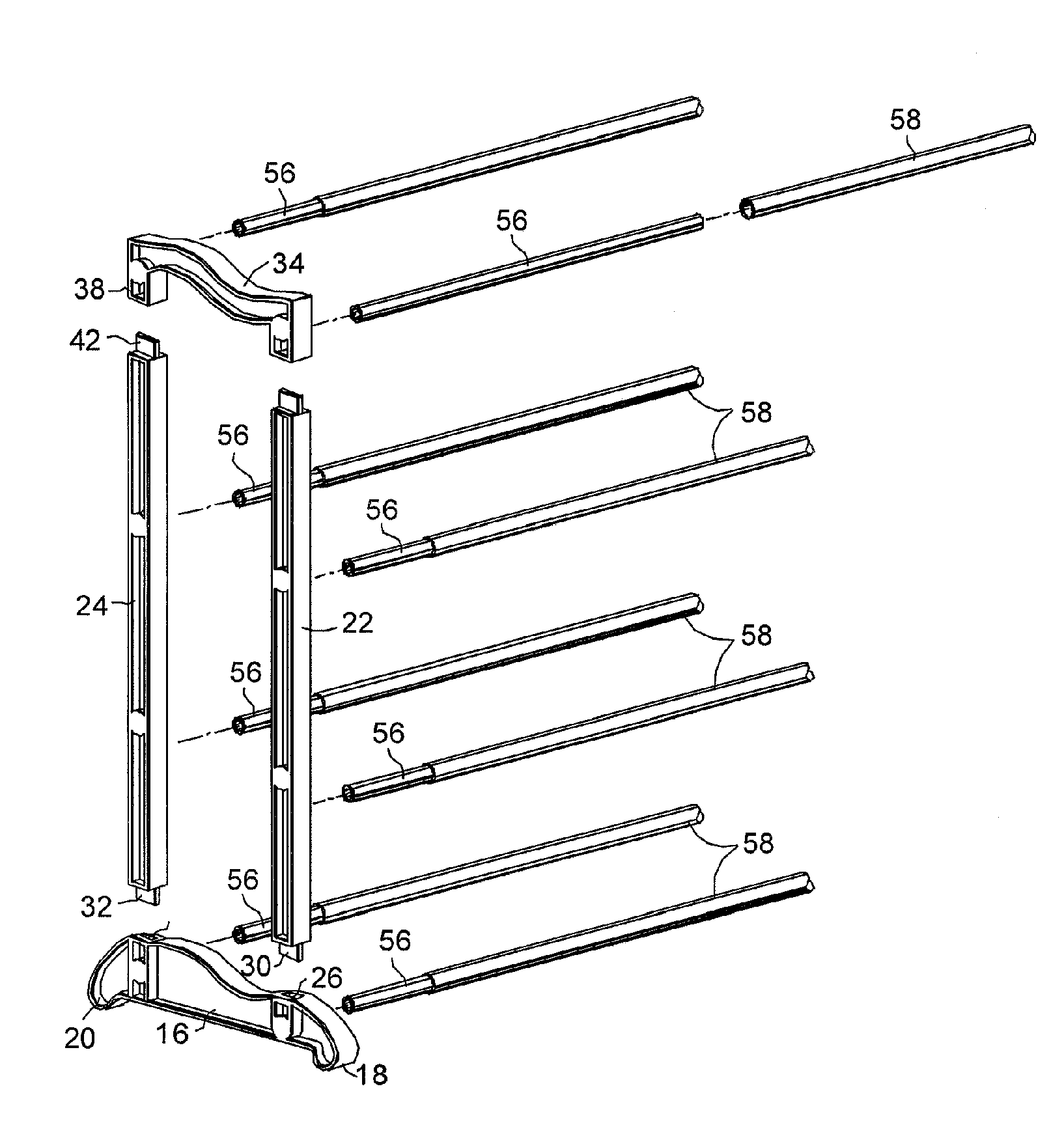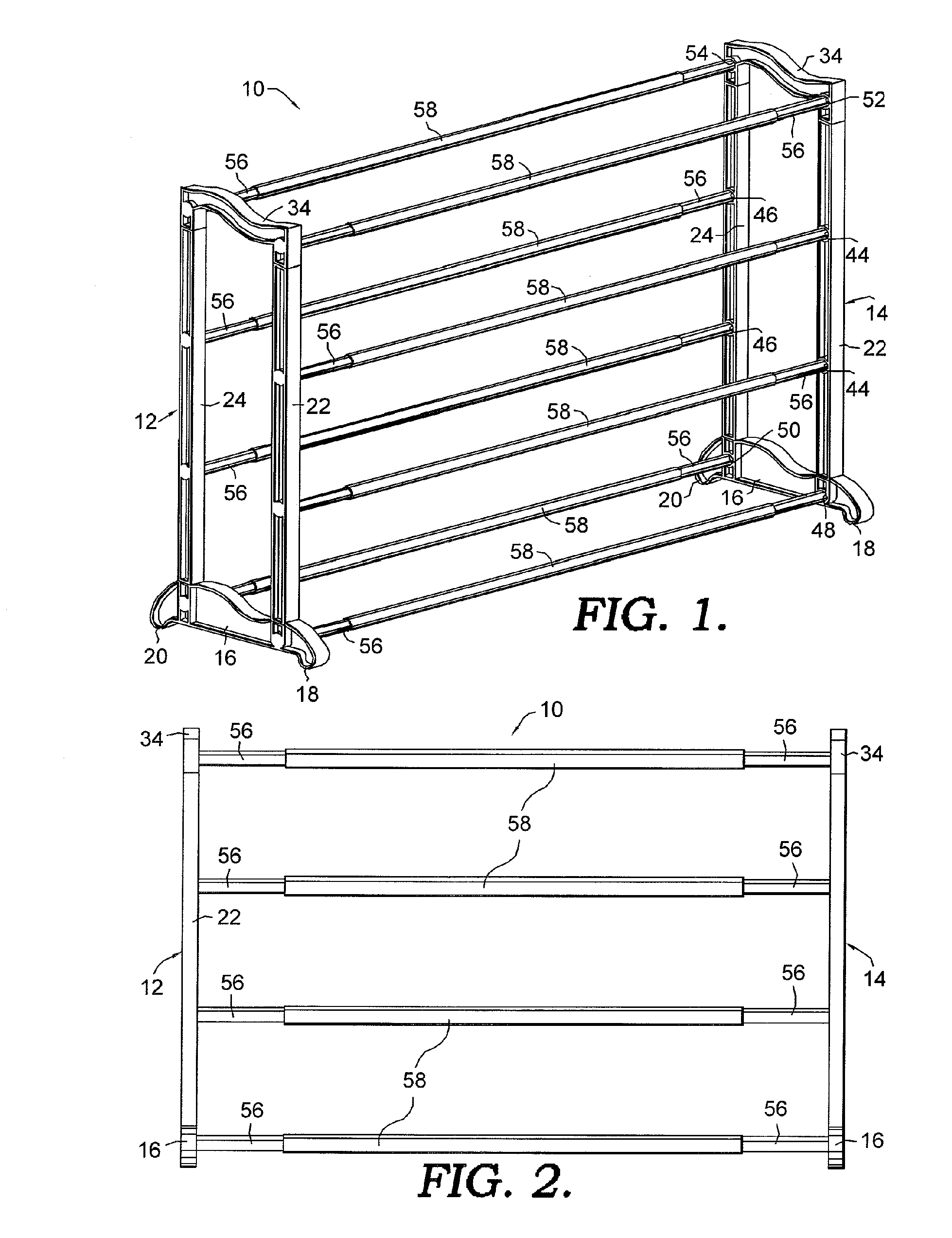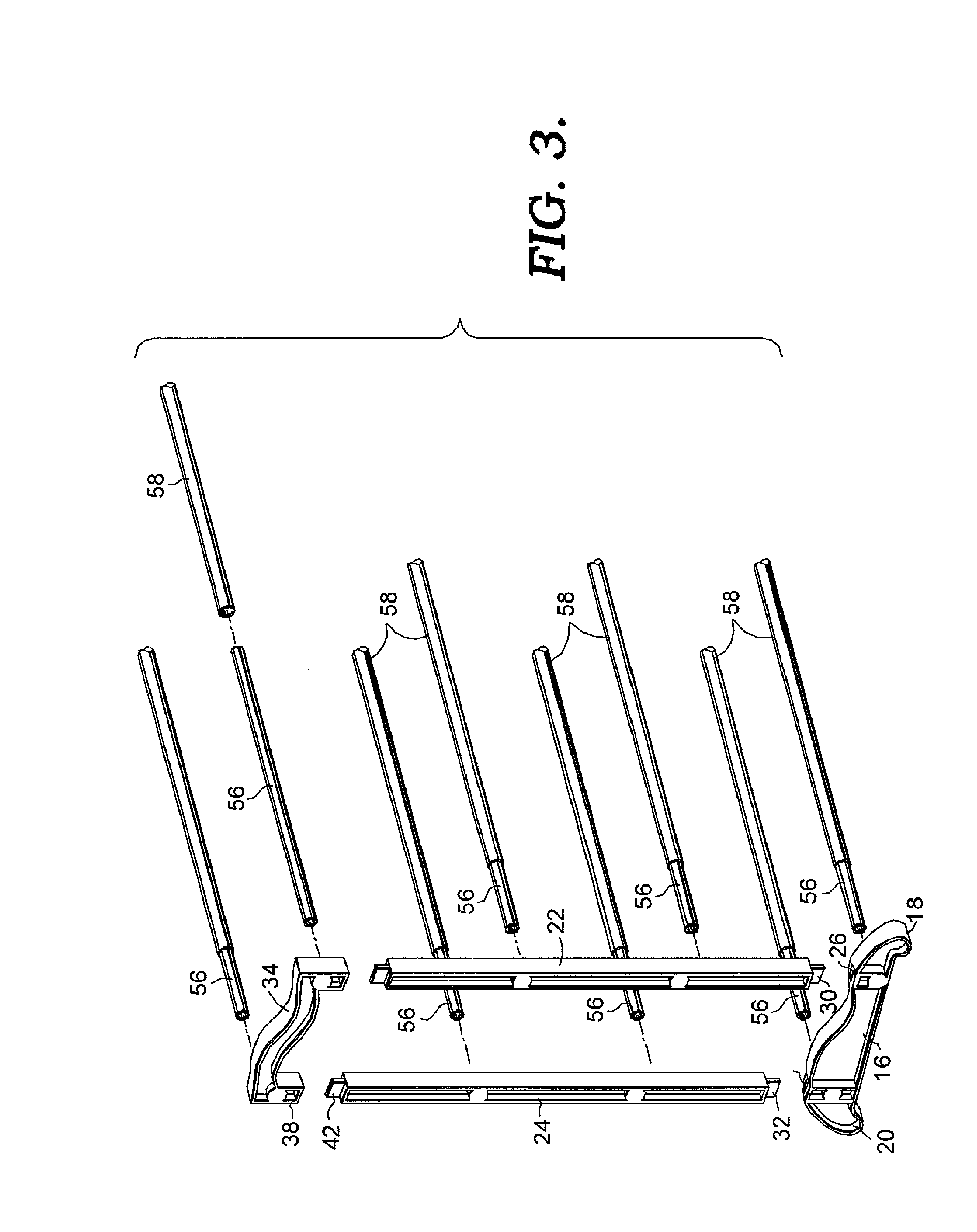Expansible shoe rack
a shoe rack and expansion technology, applied in the field of shoe racks, can solve the problems of limiting the practical capacity of the shoe rack, affecting the appearance of the product, and affecting the product reputation, so as to enhance the structural integrity and rigidity of the shoe rack construction, and improve the capacity without lengthening the packaging. , the effect of easy identification
- Summary
- Abstract
- Description
- Claims
- Application Information
AI Technical Summary
Benefits of technology
Problems solved by technology
Method used
Image
Examples
Embodiment Construction
[0021]Referring now to the drawings in more detail, numeral 10 generally designates an expansible shoe rack constructed according to a preferred embodiment of the present invention. The shoe rack 10 has a frame that includes opposite sides 12 and 14 that are mirror images of one another. Each of the frame sides 12 and 14 has a base 16 that rests on a floor or other supporting surface. Each base 16 has a front foot 18 and a rear foot 20 that contact the floor. Each frame side 12 and 14 also includes a front upright post 22 and a rear upright post 24. The post 22 and 24 may have an I-beam-type construction and have detachable connections with the base 16 at their lower ends. As shown particularly in FIG. 3, each base 16 has a slot 26 near its front end and another slot 28 near its rear end. The lower end of post 22 is provided with a tongue 30 on its lower end which may be press fit into the forward slot 26. Each of the rear posts 24 similarly has a projecting tongue 32 on its lower e...
PUM
 Login to View More
Login to View More Abstract
Description
Claims
Application Information
 Login to View More
Login to View More - R&D
- Intellectual Property
- Life Sciences
- Materials
- Tech Scout
- Unparalleled Data Quality
- Higher Quality Content
- 60% Fewer Hallucinations
Browse by: Latest US Patents, China's latest patents, Technical Efficacy Thesaurus, Application Domain, Technology Topic, Popular Technical Reports.
© 2025 PatSnap. All rights reserved.Legal|Privacy policy|Modern Slavery Act Transparency Statement|Sitemap|About US| Contact US: help@patsnap.com



